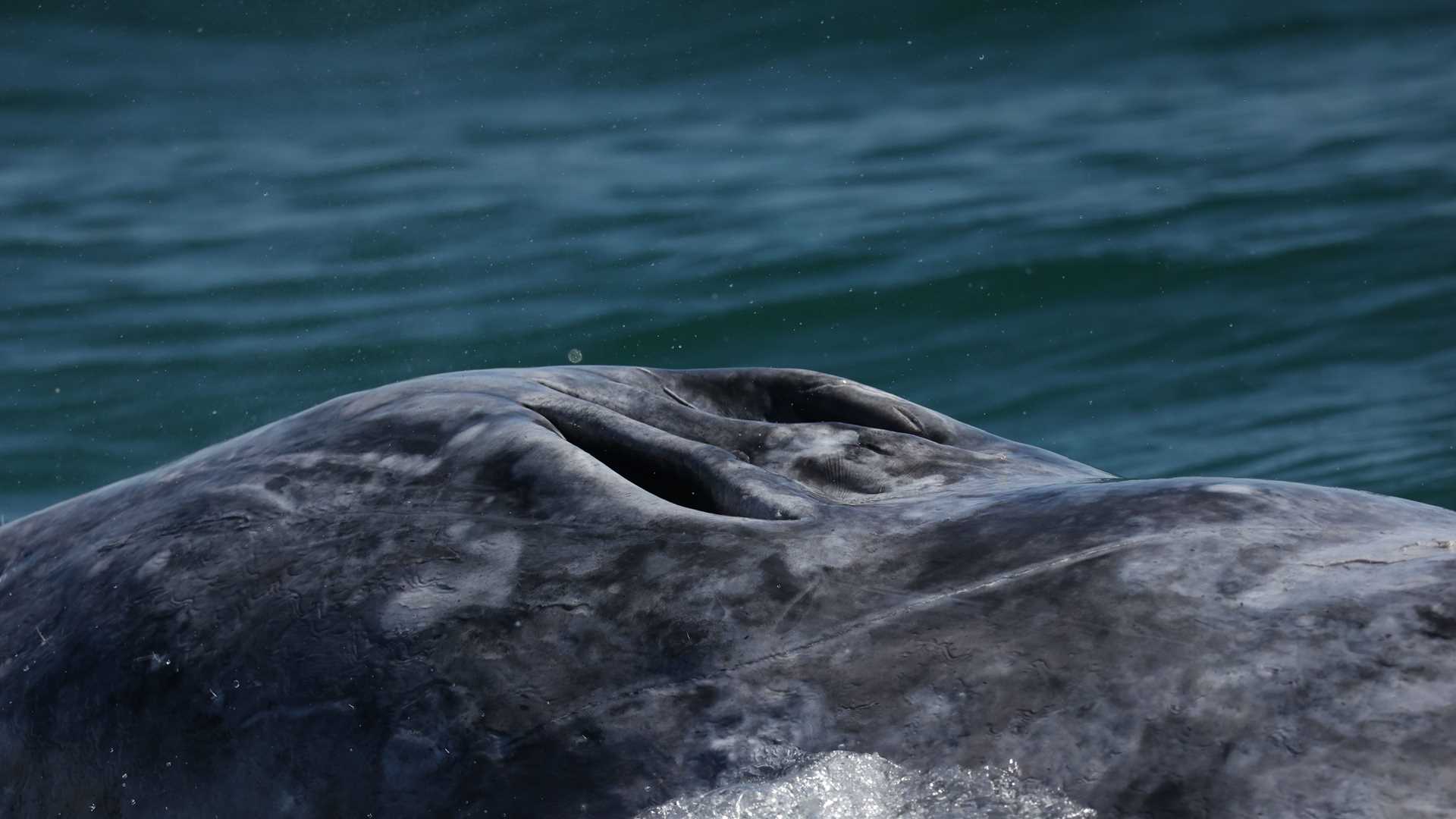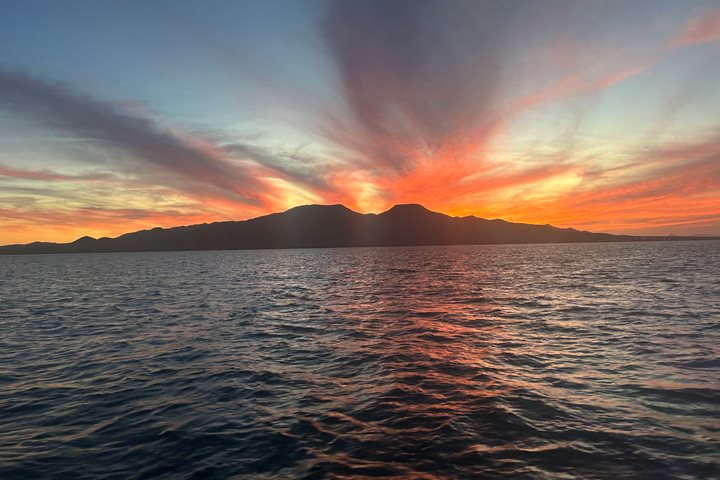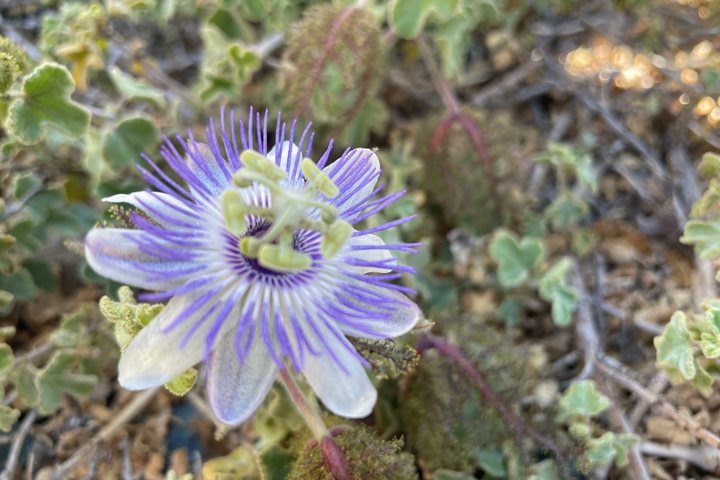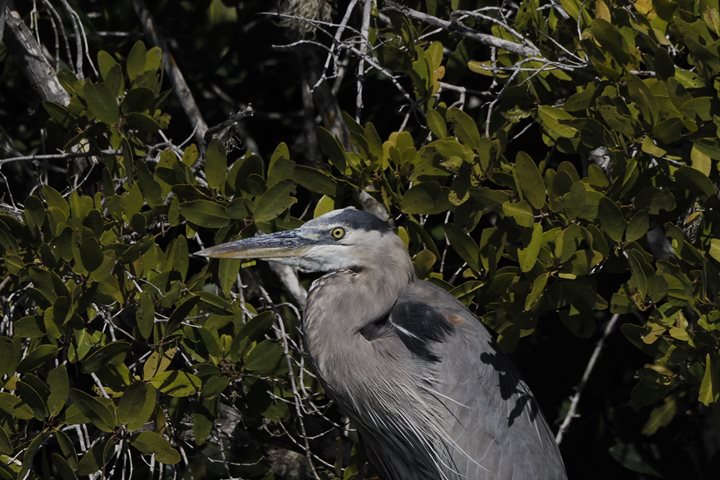We woke up today anchored off beautiful Isla Santa Margarita, where our stretch class was treated to views of frigatebirds overhead and sea lions playing in the gentle swells. After a delicious breakfast, we ventured off with our pangueros to the area of the bay that is rich with gray whales. We saw breaching, spyhopping, and even some mother and calf pairs, which is rare for this part of Bahia Magdalena. On our way back to National Geographic Sea Bird, we stopped by a magnificent frigatebird colony. We watched the huge birds with their seven-foot wingspan soar overhead, and we identified males and females by the white and red colors on their chests. We had a traditional Aztec meal of pozole before heading out for round two of whale watching. Adults and children alike screamed with glee as these whales gave us a close pass and blew snot on everyone. After enjoying an on-board Mexican fiesta with ceviche, guacamole, and tamales, we got to experience the traditional activity of the pinata. Guests of all ages participated by hitting the pinata till candy and Lindblad treats fell from the ceiling. Our day was still not over yet. We headed to the sundeck (or star deck) for a star talk by our expedition leader, sending us all off to bed with whales and constellations to fill our dreams.
- Daily Expedition Reports
- 17 Mar 2023
Bahia Magdalena, 3/17/2023, National Geographic Sea Bird
- Aboard the National Geographic Sea Bird
- Baja California
Share Report
Baja California: Observing the Whales of Magdalena Bay
VIEW ITINERARYRelated Reports
3/15/2025
Read
National Geographic Sea Bird
Puerto Magdalena
Walks in the desert can hold a plethora of surprises, and today was no exception. From clusters of scarlet Palo Adan flowers, the gems of the morning, to purple and white striped passion flowers. The numerous fruits on the vine attested to a series of flowers earlier this month. A diminutive bird, the verdin, was also interested in the Palo Adan flowers. The verdin’s short beak cannot reach the nectar, so this bird approaches the base of the flower, nips it open, and takes a nectar reward; pollination of the flower is thwarted in this thievery. The exoskeleton of a tarantula was found under the scrub, an indication of a spider that has molted and grown a bit bigger. At the end of the trail, we were all rewarded with a magnificent view of the Pacific Ocean. Good things come to those who venture outdoors.
3/14/2025
Read
National Geographic Sea Bird
Boca de la Soledad
Today we woke up in the northernmost part of Magdalena Bay. In the morning, we went whale watching at Boca de la Soledad, where we came across a mother and calf. Later, we went to Estero Chivo at high tide, where we observed a variety of birds. We were particularly interested in the numerous shorebirds, egrets, and herons. We raised anchor to continue our day. While transiting Hull Canal, we spotted bow-riding bottlenose dolphins. National Geographic Sea Bird set anchor in front of Magdalena Island. The wind was blowing, causing the dunes to come alive. After walking among dunes and desert plants, we arrived at the Pacific coast of Magdalena Island. We enjoyed walking along the beach and observing various shells, snails, and sand dollars. In the distance, we spotted the carcass of a beached gray whale and contemplated both life and death. These animals begin their lives on the coast of Mexico, and their cycle also ends here.







